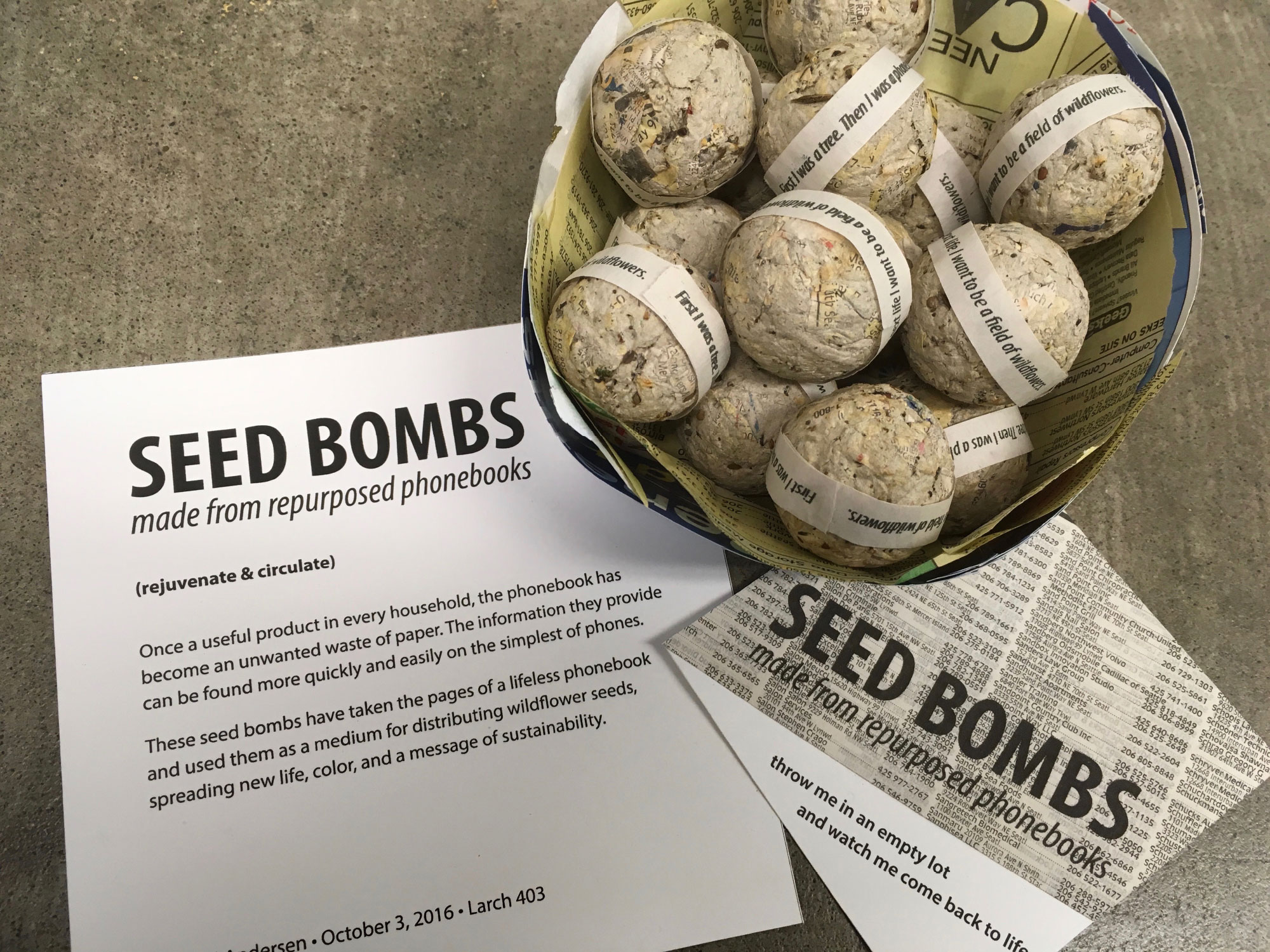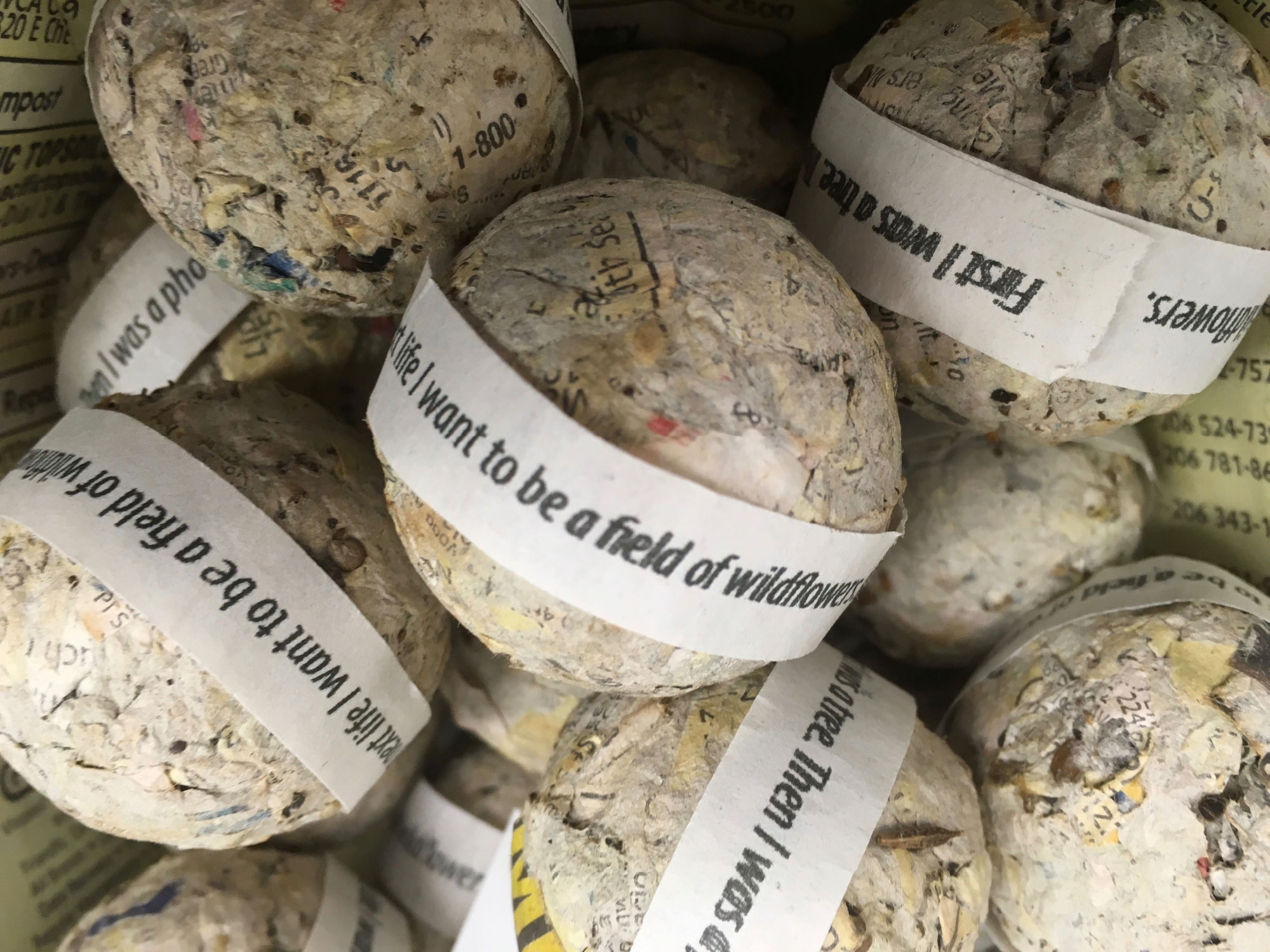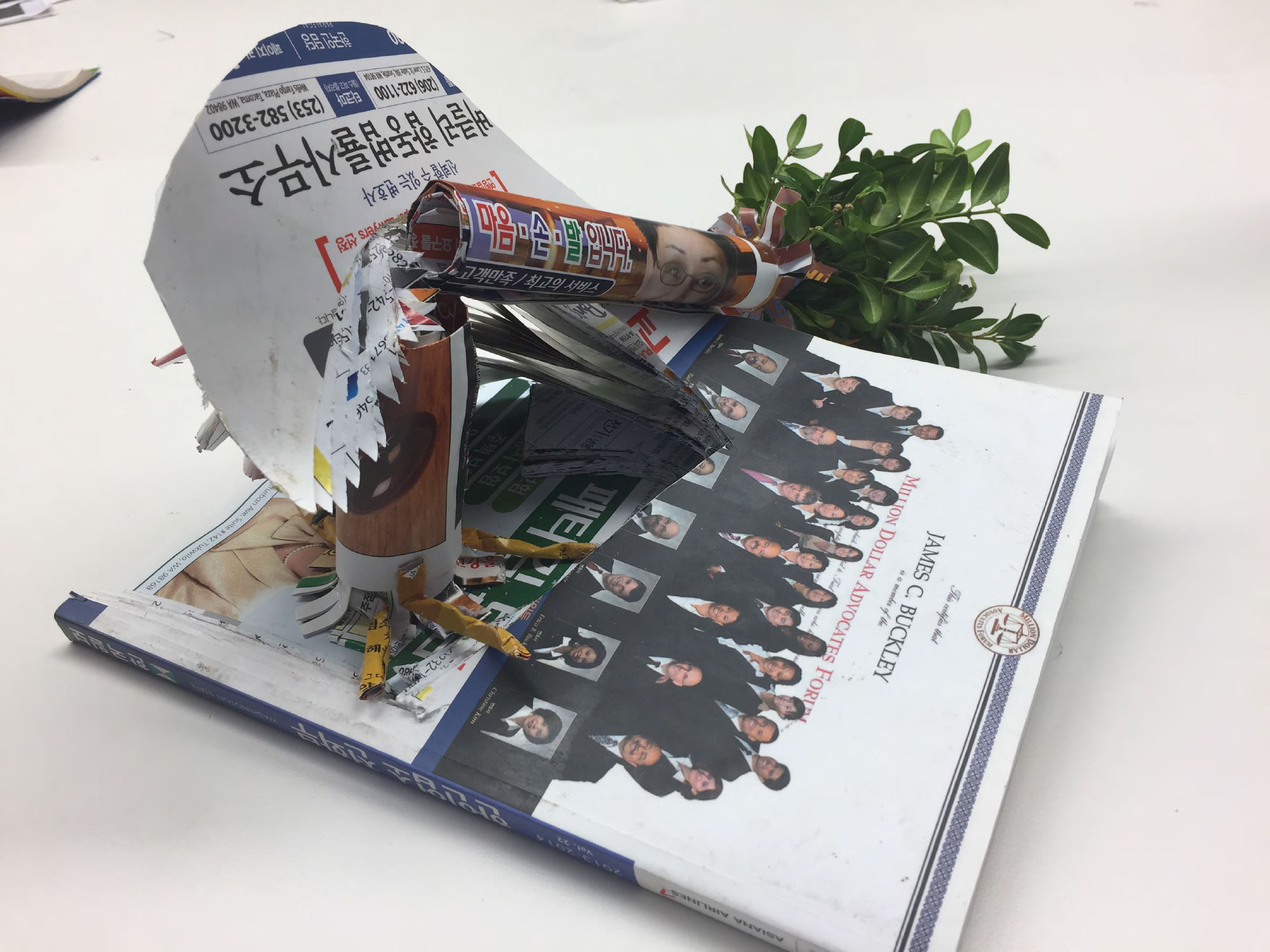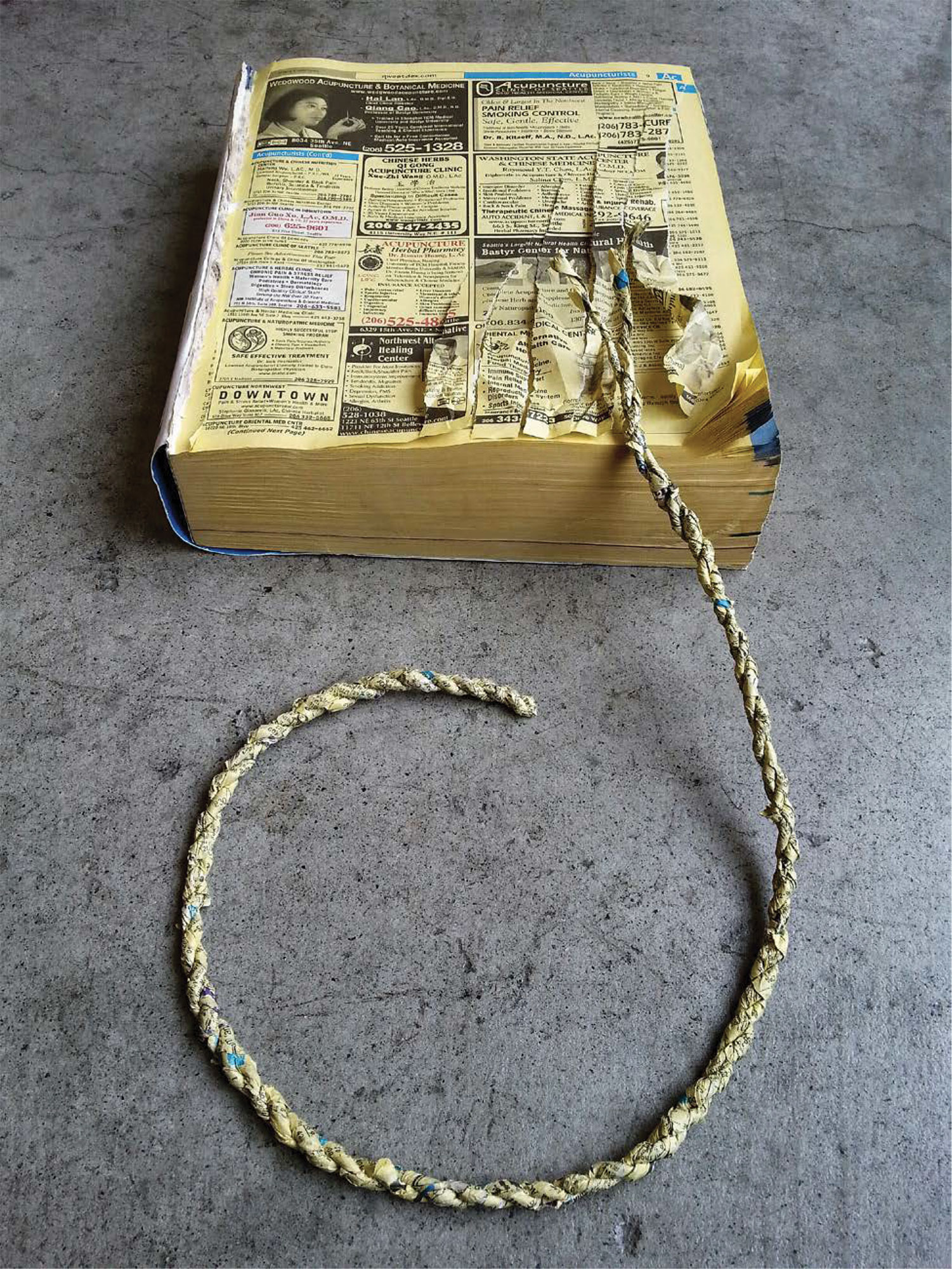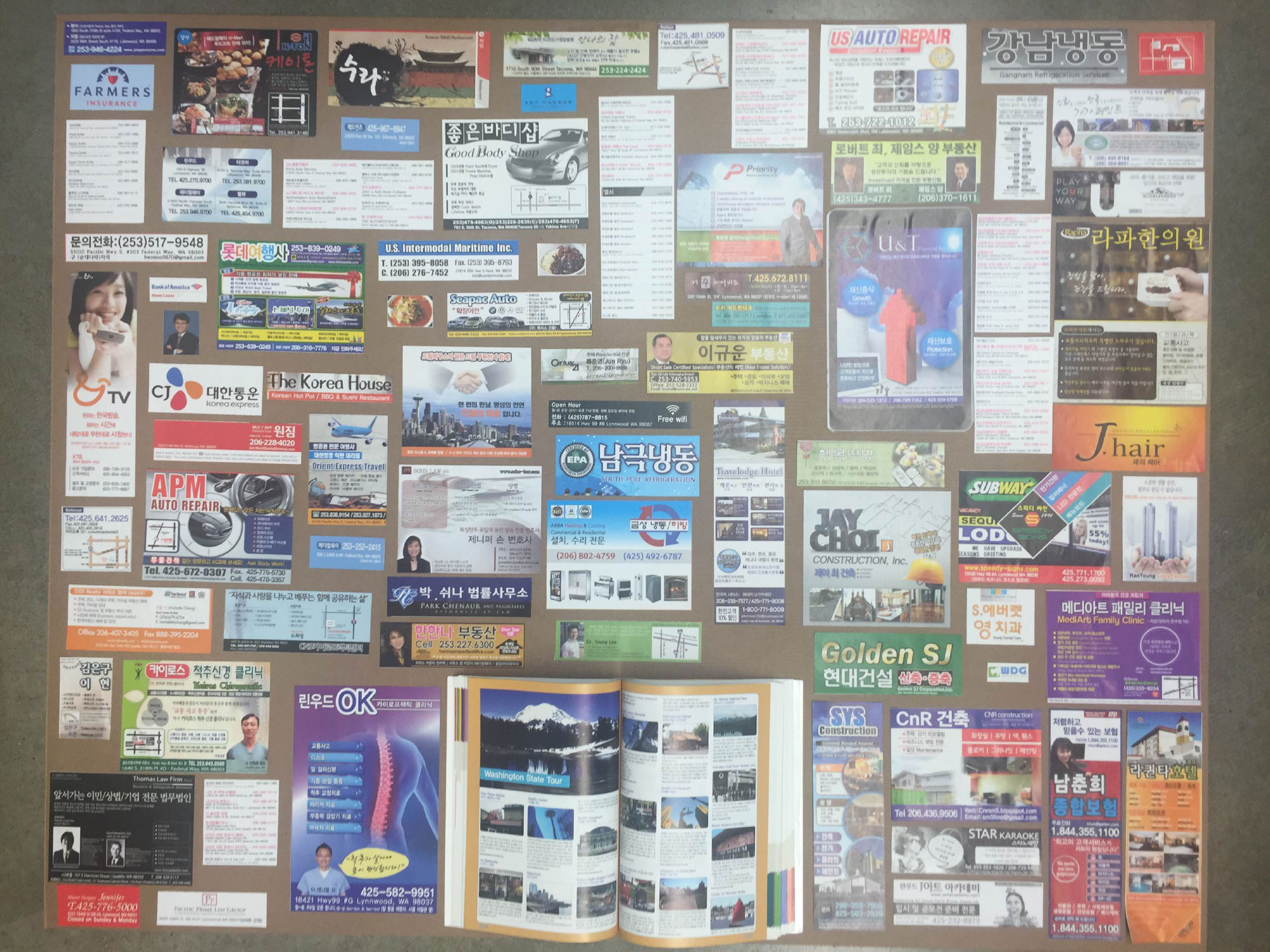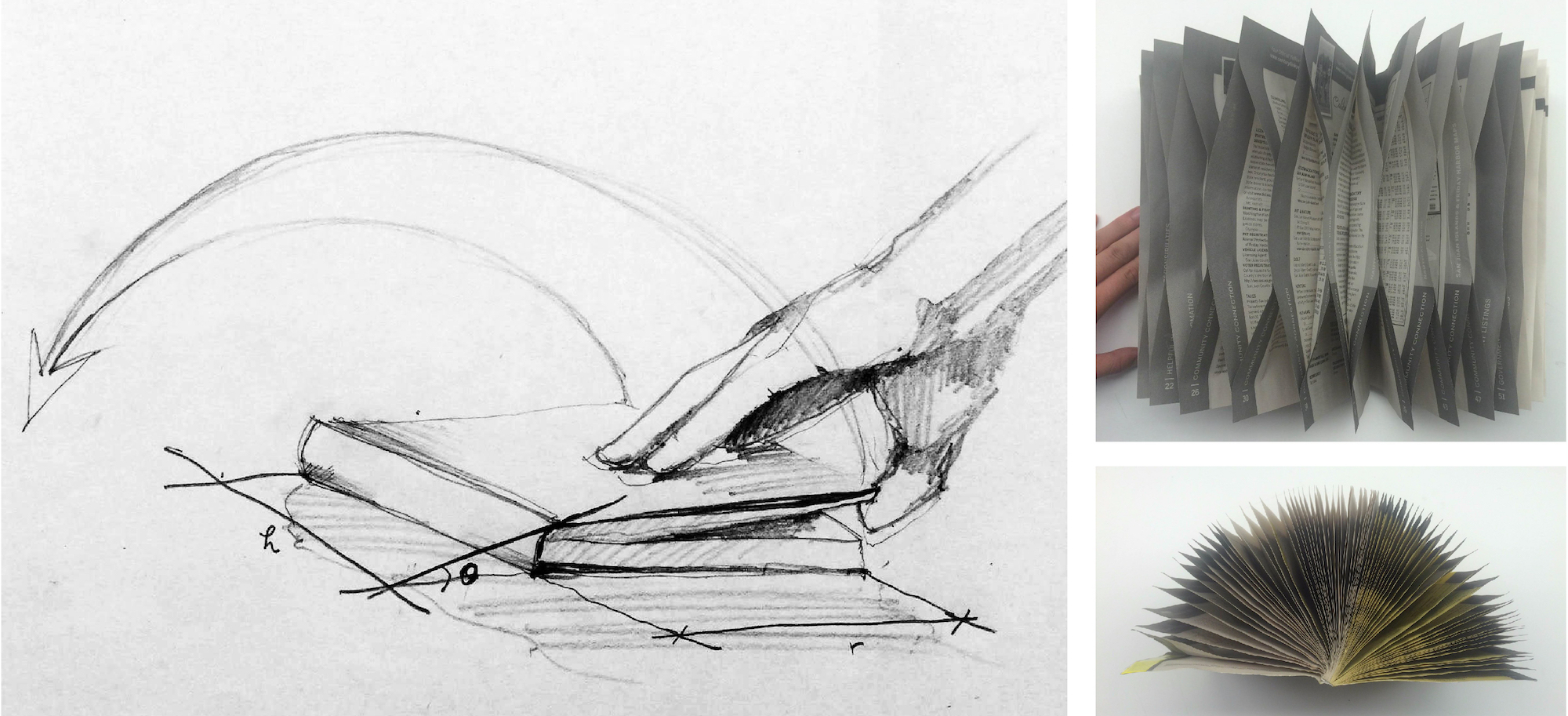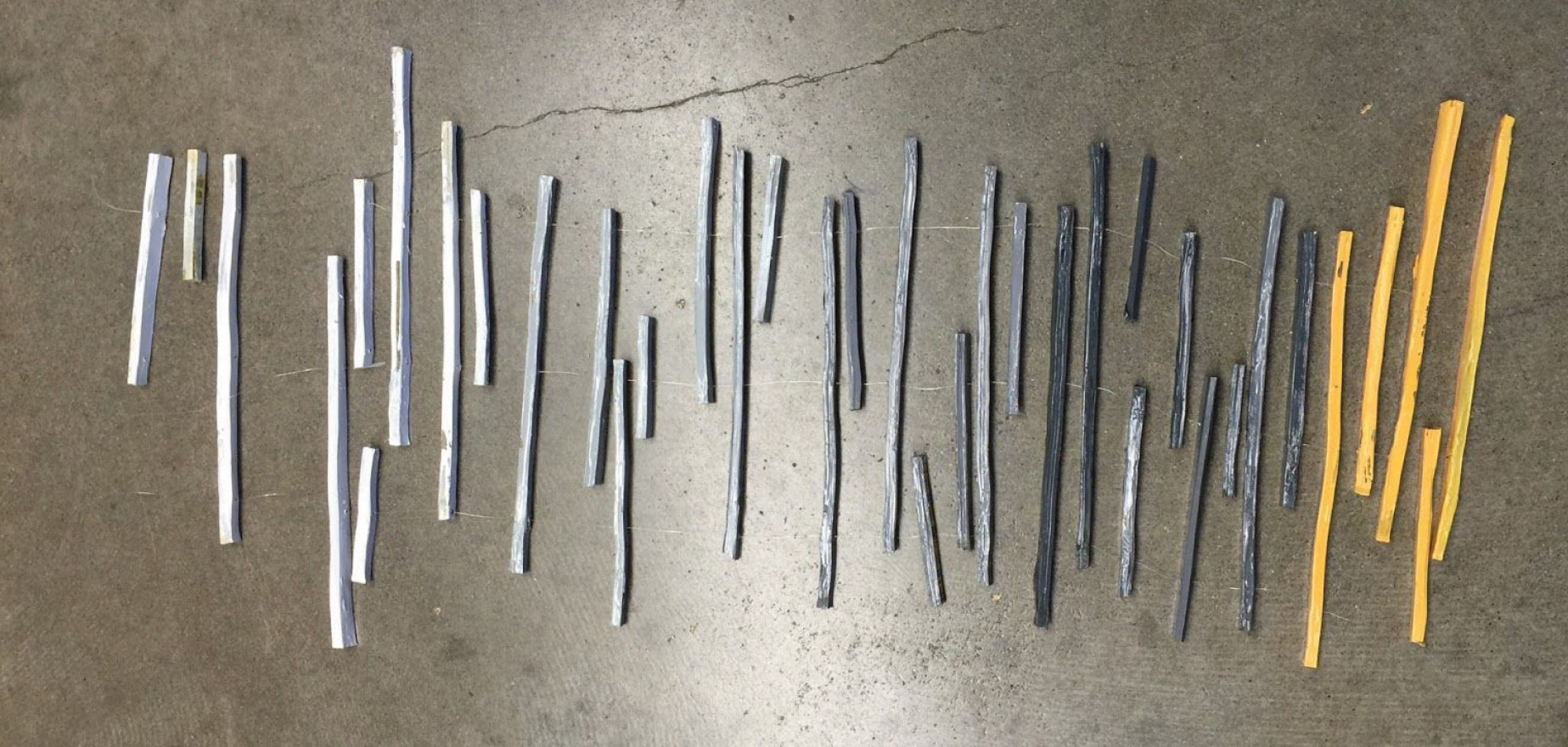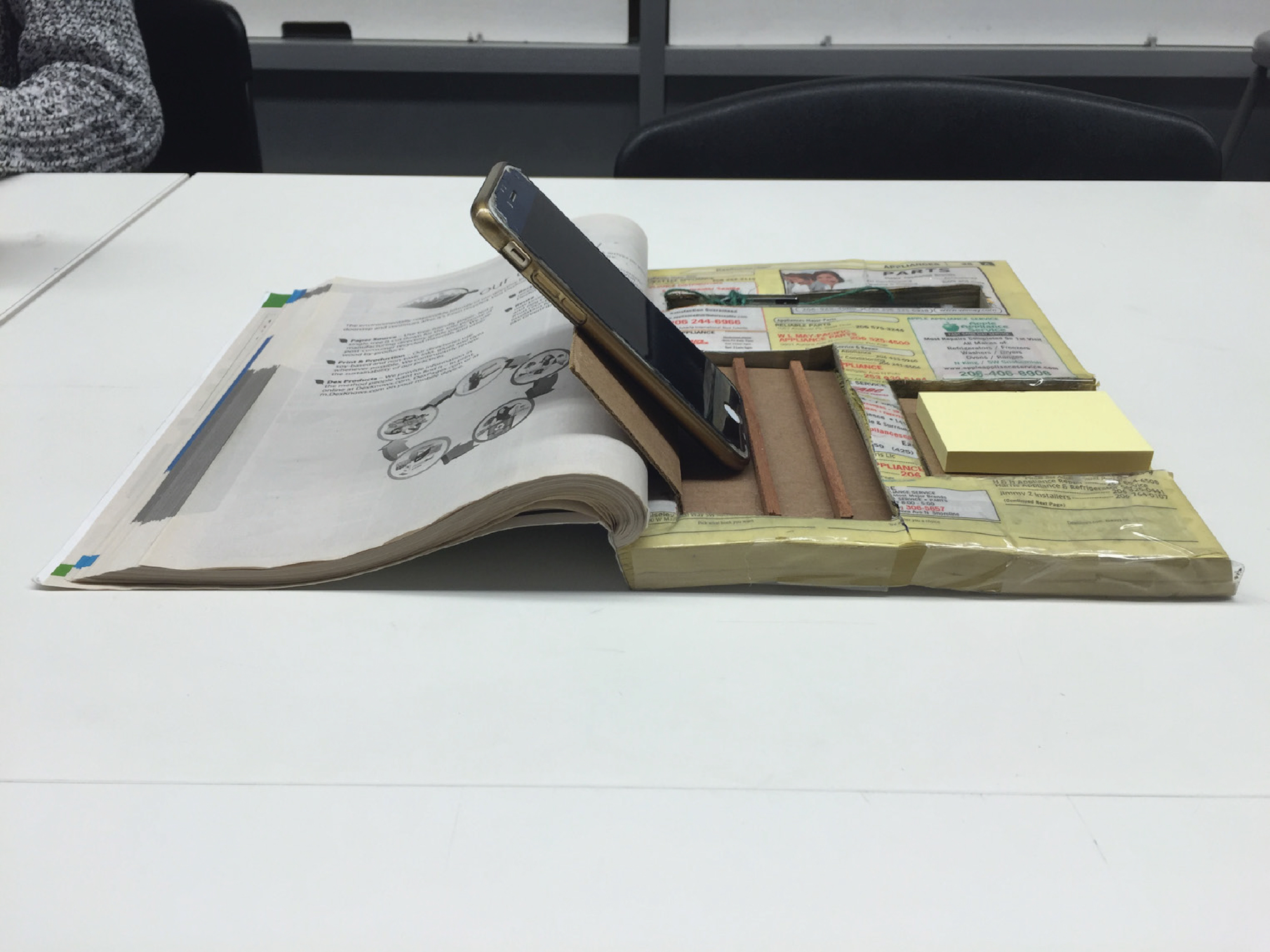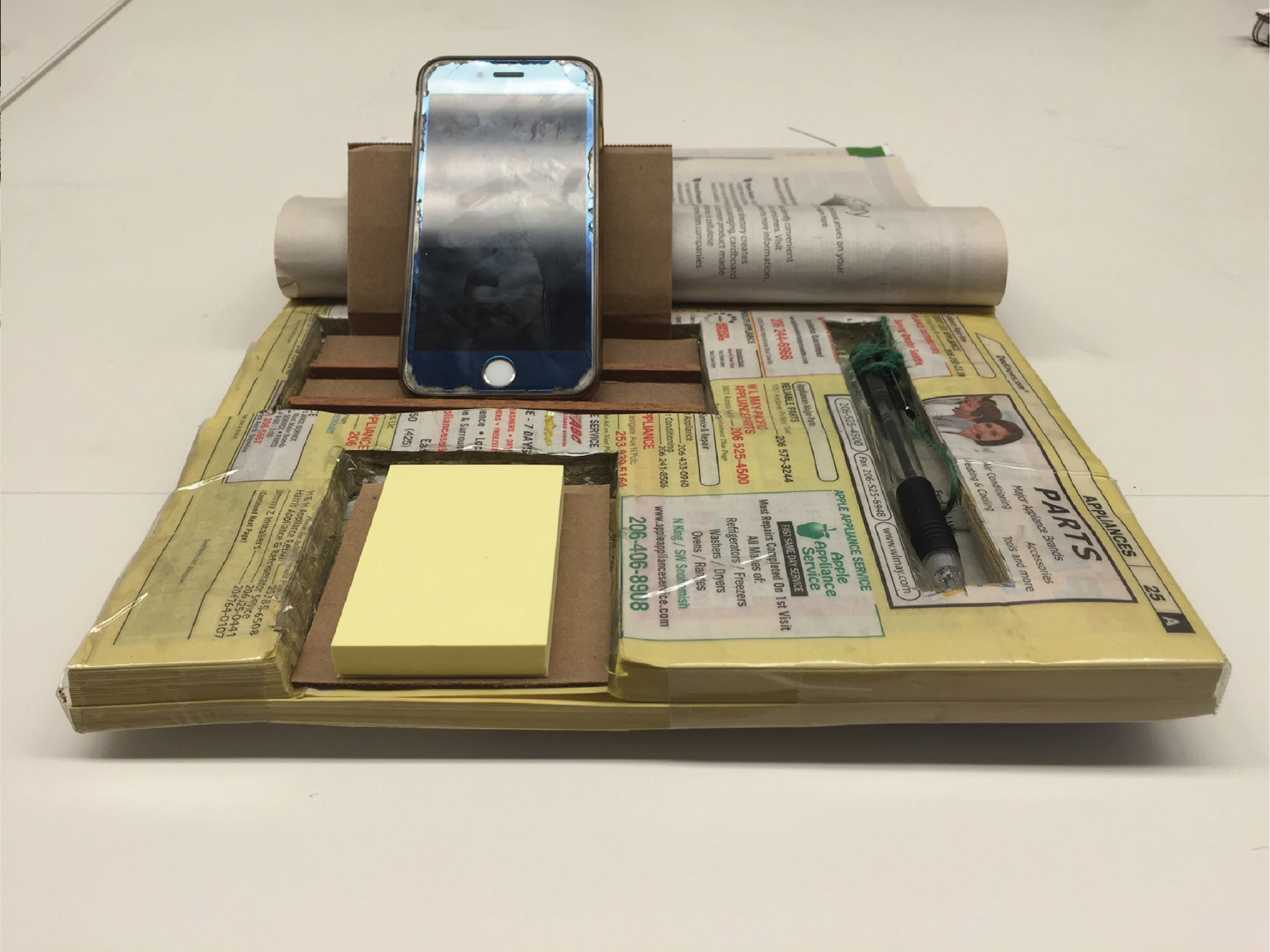in.no.vate [in-uh-veyt]
v. to introduce something new; make changes in anything established
As an initial assignment the students were asked to consider what it means to innovate as opposed to invent. They were urged to consider the concept not as the discovery of a new process or the development of an entirely new product, but as the repurposing and recycling of existing ideas and materials to generate new perspectives. These perspectives, in turn, can generate alternative modes of thinking and expression that seek to address contemporary needs.
Their material? A phonebook.
Rachel Anderson: Seed Bombs
Once a useful product in every household, the phonebook has become an unwanted waste of paper. The information they provide can be found more quickly and easily on the simplest of phones.
These seed bombs have taken the pages of a lifeless phonebook and used the as a medium for distributing wildflower seeds, spreading new life, color, and a message of sustainability.
Malene Gammelby
My product is a mapping of the forrests/ parks in immediate connection to our site; the Wayne Golf Course, the relation to the Sammamish river and the big roads and highways which wrap around the area.
I have interpreted the guiding system of the phonebook, using different colors and patterns to code the different layers of the abstract mapping.
 Hyunsang Kim
Hyunsang Kim
I wanted to deliver a message out of the phone book that no one uses anymore. First, I wondered why there are still phone books even though there is no user. Phone books are nowadays produced to function as advertisement platform. However, since no one uses the phone book, it is not effective. I thought it was such a waste to produce more phone books. So I wanted to say “let’s not make phone books anymore.”
The brown pole and leaves obviously represent a tree that is broken down, and jagged paper represent a saw that cut down the tree. By phone book itself being a saw to cut down the tree, which is original form of the phone book, it simply creates a message that making phone book harms nature and useless.
April Mulcahy: Yellow Pages Cordage
The phone book has lost its primary purpose since the proliferation of the internet. By ripping and weaving the pages of the phone book, it is repurposed into a sustainable, useable material. The cordage that could be produced from this one phone book would stretch 266 yards, or over 2 1⁄2 football fields in length.
 Yueting Ni: Code Book
Yueting Ni: Code Book
Specific numbers, small holes and the folding mark imply hidden information in the book. With the code sheet, people can make these secret codes be intelligible. The new reading strategy adds the new value to the old phonebook, and the useless phonebook gets to self-rejuvenate by getting the value of documenting some oblivious passwords or information.
Hyungbae Park: Little Big Network
This project expresses how people like to compress and organize information into a small device for convenience. This small phonebook used to function as a network and connection for people to fulfill their needs and wants. By taking a different approach and perspective, instead of collecting and putting information into the book, I took out all the information and spread them out in order to show complex information and large network are contained and organized well in the book. Also, by looking at this project, I wanted to inspire people’s different point of views.

Kristen Qiu: Obsolete but Functional
Description: Normally, books are placed in the shelves, containers or boxes. However, I turned this book to be a place or a small shelf to put stationers, such as paper, pens, scale, rulers, or envelopes. The role of book is converted to be a shelf organizing stuff. Phone book is old-fashioned and no on uses it anymore. It is abandoned in the corner of one’s house. Now, it becomes valuable again.

Tori Shao: A Geometric Model – Mobility of a Phonebook as a Function
Taking the experience of engaging with the information within a book (opening the cover, flipping through the pages); one can condense the movement of the book – catalyzed by the reader – into a geometric solid.
Using facets of the book’s movement, a basic volumetric equation can be derived. This model describes the geometry of an experience, which transcends the physicality and function of the phonebook.


Malin Weiss-Anderson: Transform + Narrate
To TRANSFORM the source into a different narrative.
The source +its solidness is exploded into shapes/categories, symbolizing less complexity as the needed information retrieved, retained and processed by the user. The mobile is showing the NARRATIVE of complexity shifting into “enlightenment”. Dark, solid, and complex, into lighter colors and spacing.
 Incheol Yang: Old to New Function
Incheol Yang: Old to New Function
Innovation is not just transforming or refining something with random functions, but it is more like increasing the potential of something old that is unused to produce valuable function. Through this model, I try to represent that something unused on can be useful item by providing new function.
